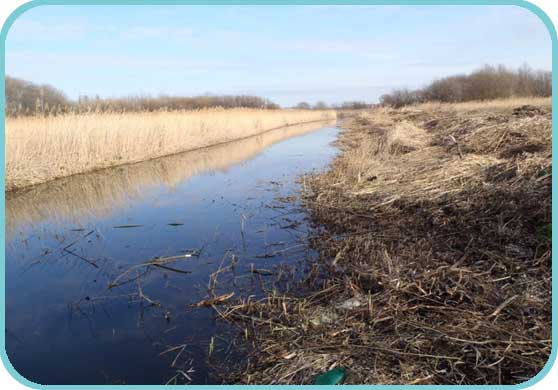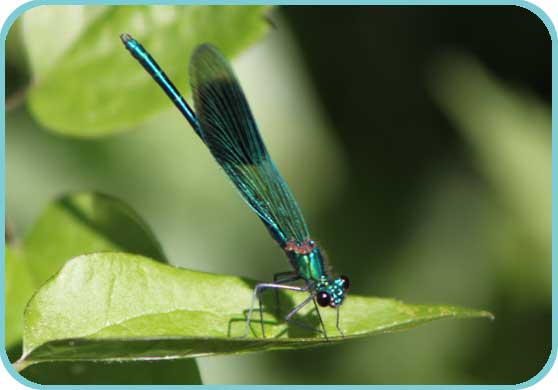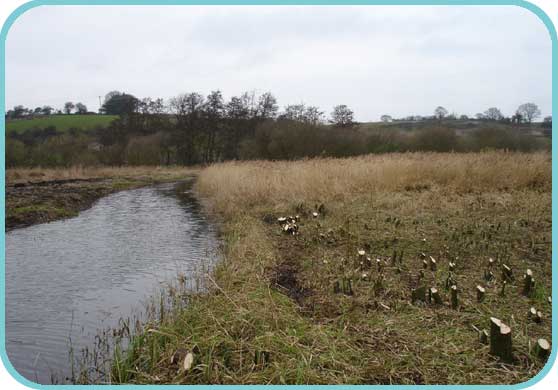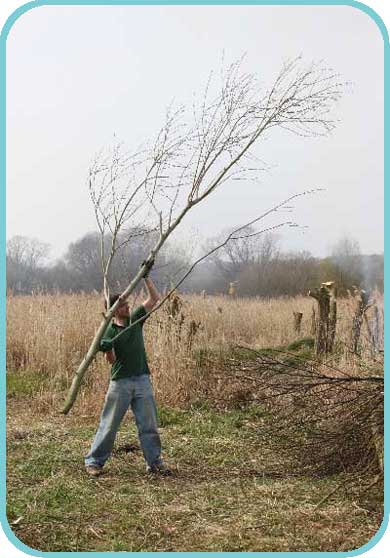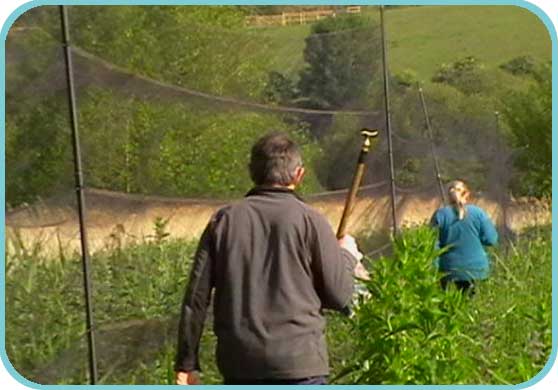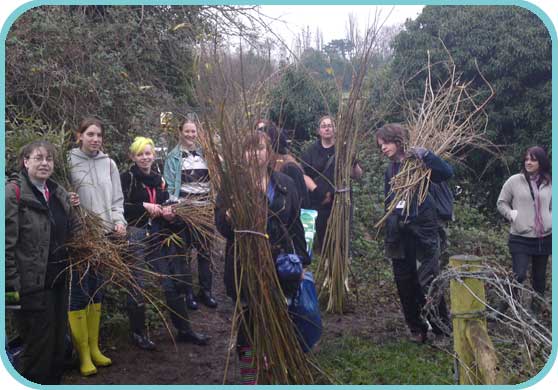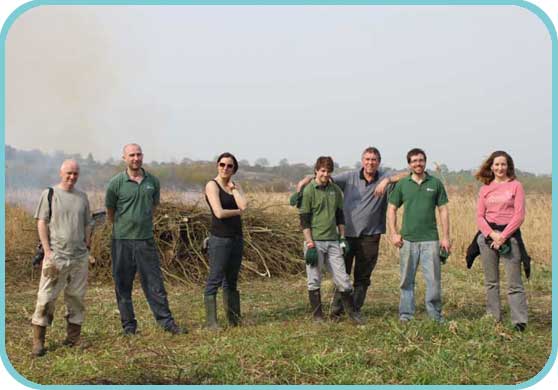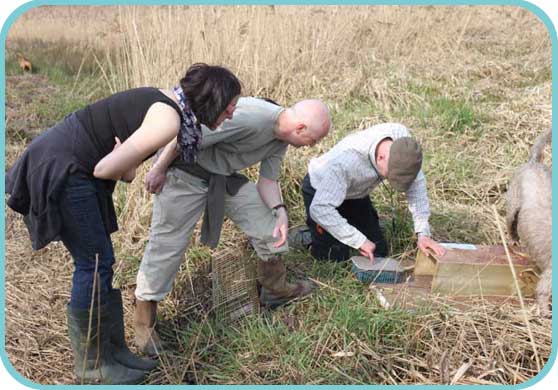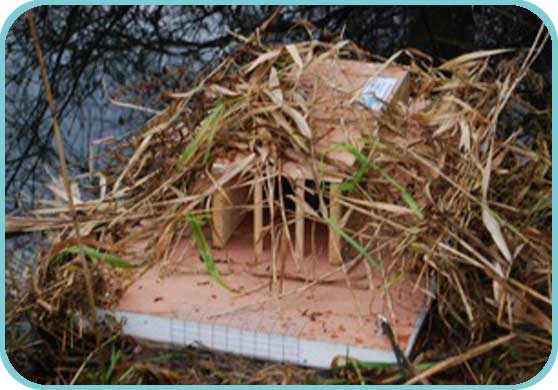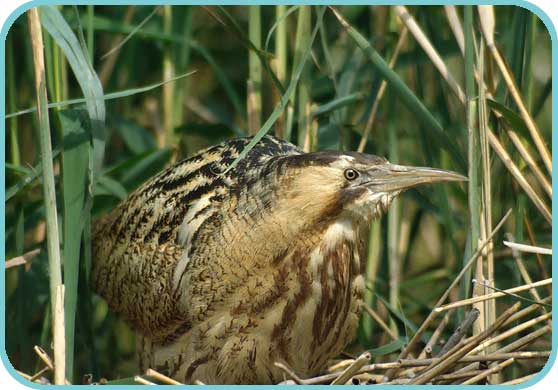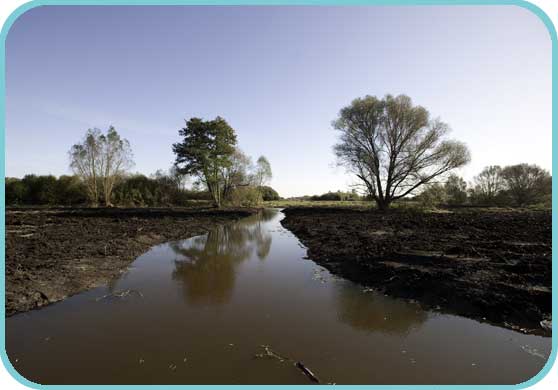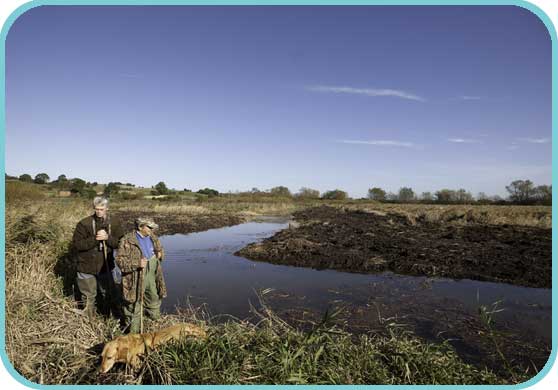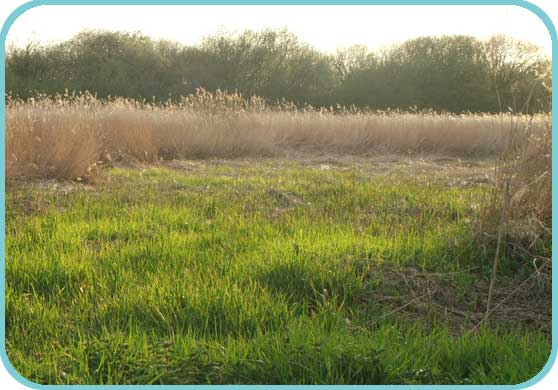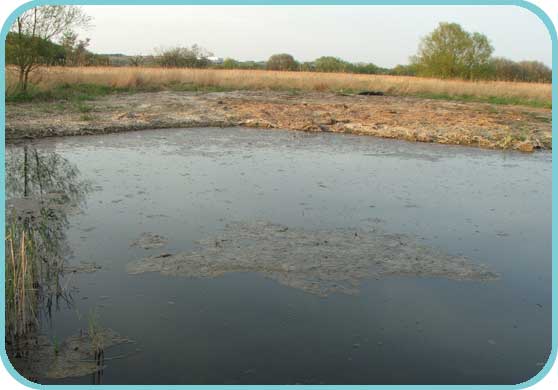Westbere Reserve - Archived news
February work party
This weekend saw another successful work party of volunteers at Westbere. Work has now started on clearing scrub within compartment 10 in the middle of the reedbed. The aim for 2012 is to clear the invasive willow from the ditch margins within compartment 10, opening up the ditches recently restored in November last year.
More ditches to be reinstated
Following the success of our initial Higher Level Stewardship improvement
works program, Natural England agreed to provide additional capital funding
to reinstate approximately one kilometre of seven metre wide ditches.
These were originally created about fifteen years ago to attract and provide
a habitat for Bitterns. Our contractor completed this additional work
in November 2011.
2011 saw the arrival of Gareth Salvidant, a student from Aberystwyth University.
Gareth is on an 18-month work experience placement, working for The Wild
Spaces Fund two days per week. His duties include general maintenance
along with identifying the varied flora and fauna found across all of
our sites, not just Westbere. He has proven to be a huge asset assisting
in the delivery of our Higher Level Stewardship program, including cutting
nearly an acre of reedbed at Westbere, along with erecting fences and
clearing paths at Motney Hill.
The Westbere HLS works continue with plans to clear all of the invasive
willow and scrub that has perpetuated across the marsh through many years
of neglect.
Nine Volunteer Work Parties in Febuary and March 2011
During February and March we had unprecedented support for our work at Westbere, we completed an impressive amount of work, all carried out by volunteer work parties. We had three days in February drawing on KWCA volunteers from across the county and as far away as London, they were tasked with scrub clearance, mainly willow and managed to clear a surprisingly large area in the northern part of the marsh.- British Trust for Ornithology
March saw the turn of a team of volunteers from our local British Trust for Ornithology (BTO), bird ringing group. They had a very specific task, to prune three strips of willow, at the southern end of the site, to chest height. The benefit of this work is to improve the effectiveness of their bird ringing activities. On the same day another group of KWCA volunteers progressed the scrub clearance work, this time in an area which will open up a new vista across the marsh.- Canterbury College
In addition to our weekend work parties we have also run a number of mid week sessions as well. Three days have been with students from Canterbury College, they are working on a project to improve the environment around the “Boot Lake” including the removal of branches and roots that are encroaching into the water. Over the coming months they will endeavour to establish a path around the lake to aid easier access.- Environment Agency
We received an interesting request from our friends at the Environment Agency, who wanted to arrange an Environmental Study Leave day for their staff. Following a detailed tour of the site to familiarise them with our vision for the future, they joined in and assisted in burning a huge amount of willow that had previously been cut by some of the other work parties. Not only did the sun shine all day, but they were treated to a wonderful display by two courting Marsh Harriers.And finally, we must not forget the constant effort that our site manager puts in every weekend along with one of our wardens who is managing our mink population on site.
A big thank you to all of you, we hope that you enjoyed yourselves and we look forward to working with you again later in the year after the breeding season.
Mink Rafts gets afloat
Many thanks to Paul for responding to our request for a mink raft constructor. Paul has made six rafts, two of which are now up and running on the reserve. Our dedicated wardens are now able to monitor and control any mink on the reserve.Bitterns Boom
On the 25 May 2010 the unmistakable call of the bittern boomed out from the dense reedbeds of our reserve, the first signs that the bird is breeding on this carefully managed site. Camouflaged perfectly to look like its reedy habitat, the males of Britain's most secretive species use their unique call to attract females and establish territory. In the right conditions his deep low-pitched boom can be heard three miles away. Since then, there have been numerous sightings this winter and early spring; the best evidence yet that the bittern is breeding on the reserve and here to stay.HLS work bears fruit
After years without management, reedbeds naturally dry out as invasive willow and alder slowly suck the lifeblood from a marsh. Dykes become clogged and left to natures own devices, woodland would prevail. Carefully applied actions such as reed cutting, scrub and tree clearance, along with a program of ditch work and water level control will, over time, reverse the damage.As the reserve awakens from its long winter slumber, heavy plant and chainsaws now away, we can begin to see the fruits of the past months' labour. Areas of reedbed, cut during the winter months, have begun to show signs of Spring as new phragmites shoot, providing ideal habitat for our increasing visible bittern population.
Restoration of the southern ditch is ongoing and the initial work looks very promising with re-colonisation taking place at a rapid pace. Additional culverts help to maintain good water quality, promoting the fish and amphibian populations. The spoil will take a little longer to settle and dry but when it does, it should provide a raised footpath which, we hope, will one day form part of a circular walk around the reserve.
The newly created pool may take longer to colonise but the open water will be immediately attractive to overwintering wildfowl as well as providing a haunt for many of the hundreds of invertebrates, fish and amphibians known to inhabit the reserve.
Click here for even older news


